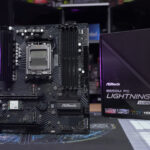Audi’s new Q6 e-tron EV features groundbreaking taillight technology
Audi has introduced its latest all-electric SUV, the Q6 e-tron, which is the first to utilize the Premium Platform Electric (PPE) developed by the German automaker. However, what sets this model apart is the cutting-edge taillight technology that comes with it.
The unique feature, known as Audi’s active digital light signature, consists of six OLED panels with a total of 360 segments. These panels have the capability to create a new image every 10 milliseconds using a specially developed algorithm by Audi.
Aside from aesthetic personalization options and the ability to strobe and shimmer upon vehicle entry, the taillights also serve a vital safety function. They have the ability to interact with the vehicle’s surroundings, providing warnings to nearby drivers through flashing triangular symbols, particularly to prevent potentially dangerous situations.
Moreover, Audi’s innovative technology can detect potential road hazards, accidents, or lane blockages by reading live traffic data through the MMI system. It can then communicate this information to following vehicles using the taillights’ unique capabilities.
However, the integration of these advanced taillights into the US market faces challenges due to current legislation requiring taillights to have a steady burning pattern. Despite this setback, Audi remains committed to developing further lighting solutions that enhance communication capabilities between vehicles and their environment.
Enhancing autonomous vehicles with interactive features
Audi’s initiative with the Q6 e-tron’s taillights aligns with the evolving landscape of autonomous vehicles. As human drivers are gradually replaced by autonomous technologies, there is a growing need for innovative interactive features to facilitate smoother interactions in urban environments.
Studies conducted by Nissan and behavioural scientists have highlighted the significance of human-vehicle interactions, emphasizing the importance of communication cues for pedestrians and other motorists. Audi’s advancement in using lighting and potential laser projection systems demonstrates a step towards addressing this need.
While regulatory challenges persist, the automotive industry’s push for interactive lighting and communication methods signals a shift towards vehicles that can effectively communicate and respond to their surroundings without human intervention.











